
By: Brent Gilson
The Wakelet of this chat can be found here
As I type this some teachers have returned to school for the new school year while others are beginning very soon in whatever capacity has been dictated by their local authorities. The 2019/2020 and 2020/2021 school experience will be one for the history books. The inequality that was so deeply woven into our education systems rose quickly to the surface when we could see nothing else. Don’t be fooled none of the inequity was new, it is just more widespread. There have been kids who did not have access to technology outside of the school since technology entered our schools. There have been students who did not have a safe place to go after school. There have been educational practices that oppress our students far before COVID-19.
Student advocacy is no more important now than it was before.
The difference is, of course, students that traditionally require less advocacy, because the circumstances of their life allowed for an easier path than others, now face hurdles they were ill-prepared for. In a search to find relief for that newfound discomfort we have renewed our calls for student advocacy. My hope, if anything good is to come of COVID impacted school systems is that the advocacy doesn’t fade away and we solve the discomfort for the privileged and that we continue working for all students.
It can be scary to speak up. I took part in the Institute for Racial Equity in Literacy this summer. There were elements that were fantastic, however when we broke out into affinity groups a common refrain from white educators was about the discomfort they felt pushing back against the system. Fears of being ostracized by their co-workers, perhaps being looked over for advancement in their schools for causing trouble. I was pissed. Here we were in an institute lead by some of the best educators I have had the pleasure to learn from and as soon as we are left to our own devices we take steps backwards. Our students can’t afford steps backwards. As educators, we must find our voice to advocate for ALL of our students. Stopping there is not much better than doing nothing. Voices don’t move things unless you are Blackbolt of the Inhumans (comic geek reference lets see who notices ? ). We gotta work, and our students need to see us doing it.
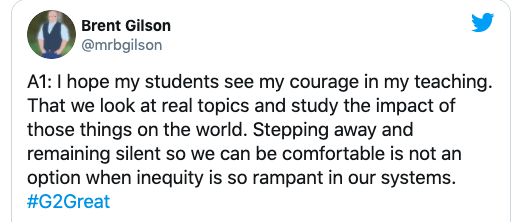
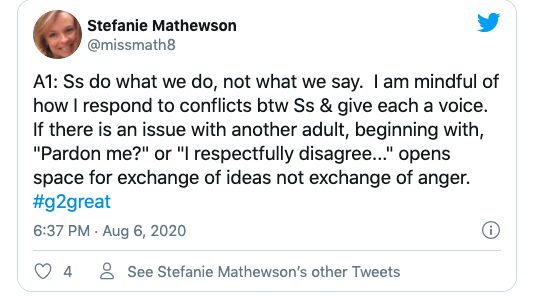
We also need to be aware of what students are facing, the systems that make up our schools were designed for white students, this might be uncomfortable news but it shouldn’t be new. So when we are looking at advocating for change away from “what has always been done” we must recognize that what has always been done is likely rooted in white supremacy and advocating against it is best for ALL students. To do nothing is to do harm and take part in curriculum violence. You can learn more about that here in a Teaching Tolerance article by Stephanie P.Jones (Thanks to the amazing Tricia Ebarvia and Dr. Kim Parker for sharing it with me)
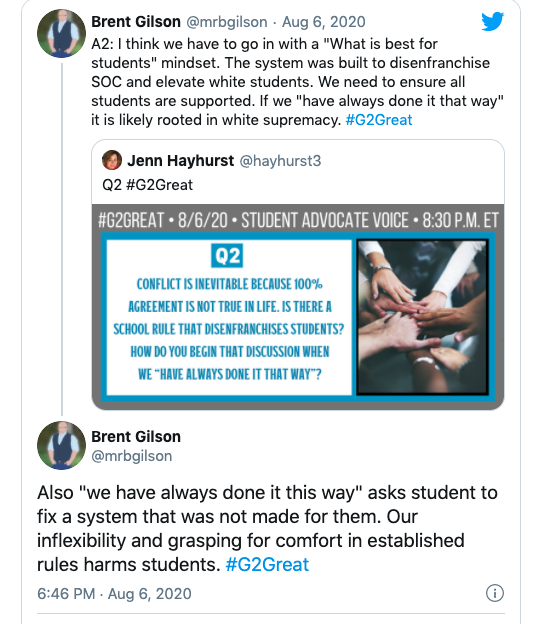
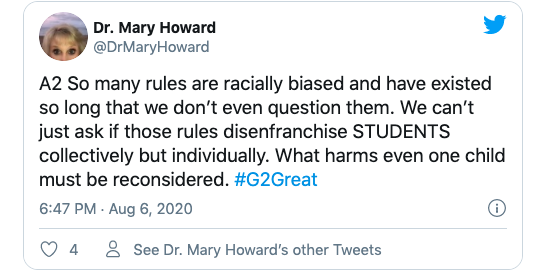
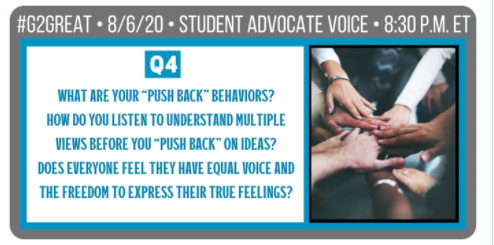
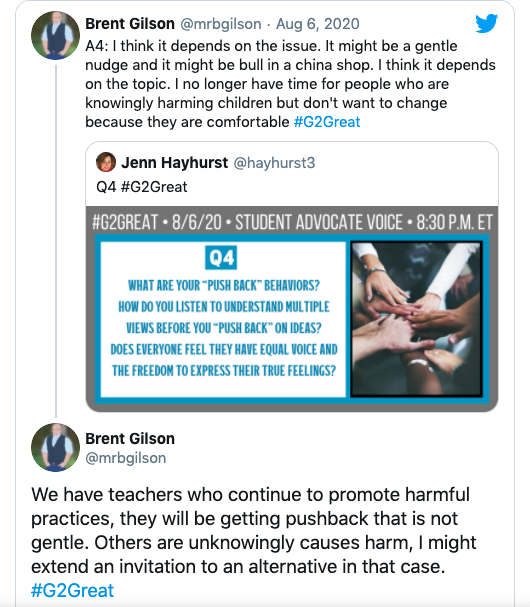
It is funny because I am a part of the team and I wanted to push back on this question haha. I have been accused of being mean in my pushback often. I don’t always listen to understand because some people hold tight to dangerous views and I am not here to listen and learn, they won’t be teaching me anything. This is most certainly a closed mindset but I think of it as a filter, if my students’ wellbeing is the focus why allow the distractions of harmful practices to take up “thinking” space? If ideas are potentially harmful they do not deserve an equal voice or the freedom to express their feelings with me (I welcome pushback here, you all know where to find me ? )
Our students have so much stacked up against them and more often than not our BIPOC students have even more.
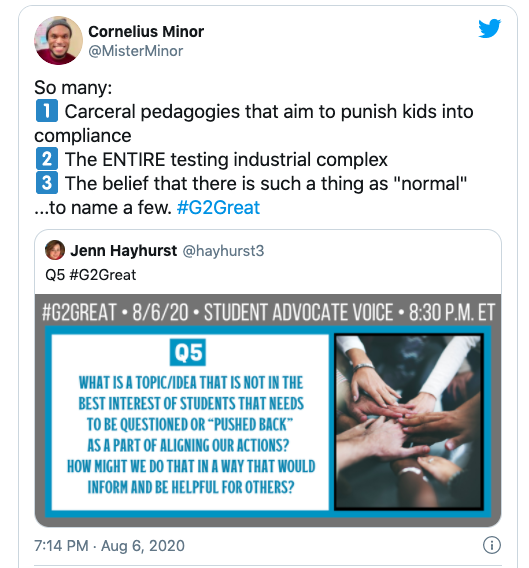
And with all of these roadblocks to success, these hurdles and hoops to jump through we see students falter. Kids pushback and face school discipline, perhaps retaliatory actions from teachers and administrators. So it really is up to us to do the pushing. There is no room for meeting a consensus if the end result is not the best possible option for students. Here Cornelius Minor reminds us where we need to be putting our energy.
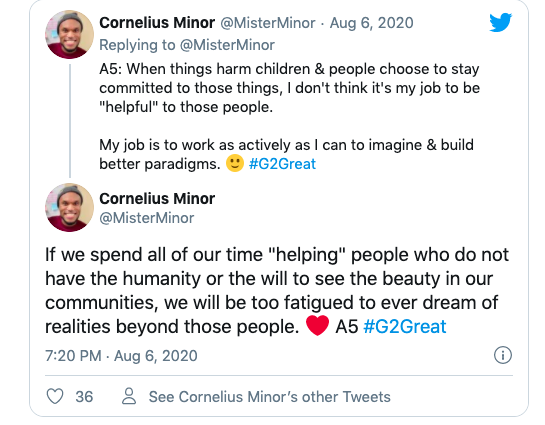
Inequity in education is probably the most visible it has been in my lifetime but none of the issues is new. Racism, access to technology, poverty, limited community services, access to quality medical services, water quality, unsafe schools and homes, ZOOM rules ? , homework policies, discipline policies that unfairly target Black and Brown students. There are countless other hurdles that meet our students in the academic realm. The dire need our students have for teachers to advocate on their behave is immeasurable. Good intentions are not enough. We can peddle kindness like Ron Popiel selling a tabletop rotisserie for 4 easy payments of $99.99 but that is not going to address the systems. As teachers, we need to advocate with both our voice and our actions. We can’t keep putting bandaids on cracks in a dam hoping it will hold. We can’t sit back waiting for the day things change.
As I was writing this the words of Dena Simmons which you can find here came to mind. She talks about Social Emotional Learning and the need to address the issues caused by white supremacy and racism as we do that work or it is what she calls, “white supremacy with a hug”. As I wrote this I thought about how Advocacy without Action is just words with a smile. If we are not actively doing something to tear down the systems that cause inequity we give them permission to exist.
Well, this has been a post. As a final thought, I want to bring up a question Dr. Sonja Cherry-Paul brought up during IREL20 when speaking about ways we (white educators) can address racism and work towards equity,
“What are you willing to give up?”
This is another point that I think applies to advocacy work. What are we willing to give up?
Are we willing to put our students before our comfort? Are we willing to put our students before our work relationships? Before our standing in a school? Advocacy is rarely popular because it is pushing back against an established thing, but with students at the centre of our decision making we need to work for what is best for them and ride through the turbulence that this good work might cause in our school community.